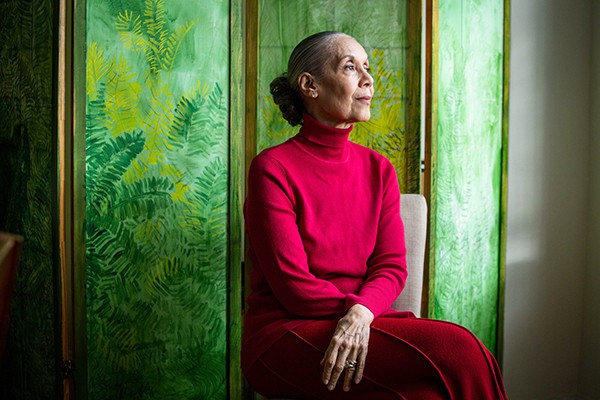Share
Tips for Pitching Editorial Clients and Landing Gigs
This interview is just one of many from our free, downloadable Guide: Breaking Into Editorial Photography. For more tips, download your copy today,...

This interview is just one of many from our free, downloadable Guide: Breaking Into Editorial Photography. For more tips, download your copy today, here.
With a degree in fashion design from Drexel University and just a few photography classes under her belt, Erin Patrice O’Brien moved to New York City in 1995 determined to build a career in photography. She learned on the job by assisting for three and a half years while she worked on her portfolio. Since going out on her own, O’Brien has built a business as an editorial and commercial photographer specializing in celebrity, youth culture, portraiture, and kids photography. She’s photographed A-list actors, politicians and musicians for the likes of Entertainment Weekly, Newsweek, Premiere and many more.
PhotoShelter: How did you get your first breaks into editorial photography?
Erin Patrice O’Brien: My first big break was when I brought a personal project about the UniverSoul Circus to George Pitts at Vibe Magazine. They published it as a five-page spread. At the same time a magazine called Stress, which was an underground hip-hop magazine, also hired me to shoot for them. Their founder Alan KET, went on to start Complex and also work at Vibe, and we have continued to collaborate.
What advice do you have about editing your portfolio to attract the editorial clients you want?
You have to figure out what you want and love to shoot, and show that in your book. What gets you hired is when you show who you really are. Don’t show anything unless you love it, unless you think it’s really good. You have to assume that a photo editor knows that any good photographer can take a picture on a white seamless. So unless it’s an amazing picture, you don’t have to show it in your book. Even if you were hired by a really good magazine, if it’s not your best picture, don’t put it in your book. Even for a high-profile magazine, there are so many things that can come into play in a shoot. The person can be unphotogenic, the hair and makeup could be terrible, and the location could be awful. You just have to make it work the best you can for that day on that shoot, and hopefully it’s amazing, but if it’s not, don’t put it in your book.
What advice do you have about contacting new potential clients? 
I think the best way is reaching out and then staying in touch via email, printed mailers and social media. I always think photo editors are getting so much email, and they forget about people, too. So it’s good to keep in touch. For someone starting out, don’t expect to be hired right away. Photo editors want to see a progression in your work. If you touch base every few months with new work, it’s a way to show you latest work and keep you on their radar until the right project comes up.
Do you try to meet with photo editors in person?
Meeting in person is great. I think it’s important to see photo editors so they remember that you’re out there. For meetings, you have to be a little vulnerable, so it’s something that’s easy to put off, but it’s important. Keep in mind as you start going in for meetings that they are always very quick. You can’t take that personally. Photo editors have a lot going on, so they usually only have about 10 minutes to meet with you.
How do you prepare for a meeting with a new potential client?
Before a meeting with a photo editor, I’ll put together a customized PDF of images I think are relevant for the magazine, if they’re not in my book already, and show both. I’m always shooting personal projects on the side of subjects that I really like to photograph the way that I see it. I bring in some of that personal work in another book, and show that as well. Photo editors and art directors like to see the personal work. It shows how you think and what your other interests are.
How do you show your work?
I’m experimenting with different ways to print my portfolios. There are all these online book publishers now, so you can make your own book, set it up online, and then it comes in the mail. I have a book on my iPad so if I’m going to be somewhere where I could have the opportunity to show someone, I’ll bring it. Or if I have a job, I’ll bring it to the shoot if the photo editor is going to be there.
What marketing tools are most important to you? Social media? Networking? Website?
I think all of those are good. I do newsletters and I do personal emails with pictures. If I have a new contact at a magazine, I’ll put together a PDF of work that I think is relevant to the magazine. It’s like a mini-portfolio that is more specific to them, maybe with pictures from my archive that aren’t on my website right now. I also make promos and send them in the mail. I also think social media is useful because it shows the photo editors that you’re working.
I also enter some of the photography contests, which can be good for marketing. I had a picture in American Photography last year, and then I got to go to their party and connect with people in person. However you choose to market your work, I recommend keeping track of who is working where on LinkedIn because people move around a lot. I’ve used Yodelist and Agency Access at different points, and I have a database of everybody and keep track of clients with that.
When it comes to landing clients, are there any lessons you wished you’d learned earlier?
I wish I wouldn’t have spent so much time worrying about being too pushy. If you are not being assertive, someone else is. Hearing no response can be disheartening. However, many times photo editors have called me years later from a promo that I sent or an email reference.
How do you ensure you are making enough money as an editorial photographer?
Most magazines still pay around $500-$1,000, plus expenses a day, and that’s how much they paid in 1999, and the rates haven’t gone up. I think that basically you have to have more than one income from photography. I completely support myself with photography, but I do editorial, I do stock, I syndicate my work. People contact me for usages of images I’ve had in the past.
I will also try to negotiate for more money. Sometimes it works and sometimes it doesn’t. If a job is not a great job and they want a lot of work for a really low day rate, I will turn it down just because I’ll lose money. I’ll also turn down a job if they are trying to take rights away in the contract. I won’t just let them take that over. You can make an extra $500 to $1000 from reprints, for instance, so make sure you will get paid for that usage.
When the magazine business scaled back a few years ago, I decided to adapt my style to make certain editorial jobs more worthwhile. In order to shoot without all of the lights and big production, I developed another style that was more reportage style that is more cost-effective.
Do you find that editorial shoots lead to other work or income?
I think the type of photos I shoot help lead to other work because I photograph people who are recognizable. I have resold a lot of images that I’ve shot for different publications. For instance, I did a shoot for a real estate magazine that paid $500 flat, including everything, but it was of Dan Doctoroff, who was the last CEO of Bloomberg. I knew there would be a resale value, but also the location was amazing and I got a great photo out of it—and it took me 15 minutes. In that case, it was worth my while.
I also sell my photos as stock through Getty and Corbis. I have a few images that are the only ones that exist of a person. I shot a photo of Amy Chua, author of Battle Hymn of the Tiger Mother, and her children for The Wall Street Journal. That photo has sold so much because she didn’t do any more shoots with her kids after my shoot. The first year that I shot it, I made about $10,000 from that one photo because it was hot at the time and it was the only photo. For fun, I would search Google to see if anyone used it without paying for it. I emailed them and told them they had to pay for it, and they did!
Want more tips on how to start getting your dream editorial clients? Download the Guide today!





